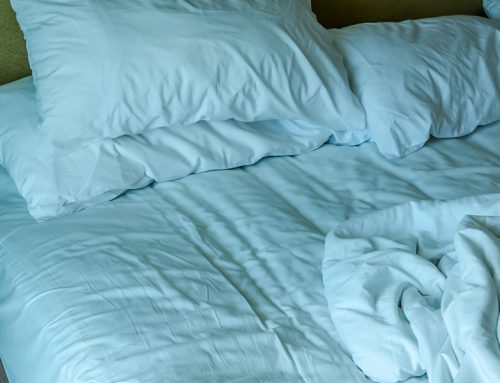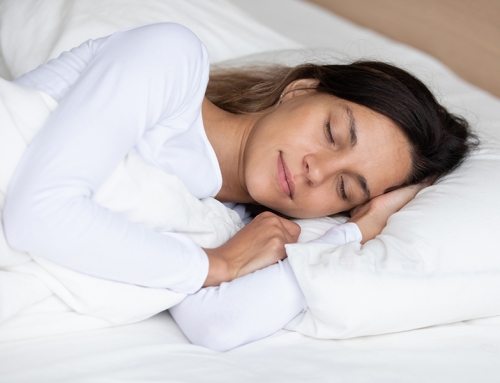Whether you’re dealing with a lice infestation, want to prevent one, or are just curious about lice, having some knowledge about their life cycle can be useful. Knowing how long they can live on your mattress is one of those important bits of information.
This article will discuss the lice life cycle – how they feed and reproduce – paying special attention to how they might end up on your mattress. We also offer a couple quick tips for dealing with head lice once you’ve found some on your bed or in your sheets.
The Lice Life Cycle
First, what are head lice?
Lice are human parasites (meaning they attach to us as their host) that feed on our blood, and they can be inadvertently transferred from one head to another. Pets and other animals can’t get head lice, and they are most commonly found in children, although adults are not immune. Approximately 6 to 12 million children aged 3-11 get head lice each year in the US alone. Put another way, that’s about one in 5 kids.
A single adult louse is quite small – about the size of a sesame seed – and their eggs are even smaller. This is why they can be very difficult to spot, especially in the early stages of an infestation. Adults are usually a white or grey-ish color, while eggs are usually tan, brown or yellow.
Lice are well adapted to living in human hair, and can be transferred from one person to another through contact. The most common form of transference is ‘head to head’ contact like touching an infected person’s hair and then your own, or using the same comb, for example. Individual lice can live for about 30 days on a human head, but will continue to multiply during that time.
Female lice reproduce by laying eggs (up to 4-8 per day) which attach onto hair shafts, and hatch into baby lice called nymphs in a week or so. Before hatching, the eggs need the warmth of a scalp to remain viable, and after hatching they require a supply of human blood to stay alive. After another week, nymphs mature into adult lice. Female adult lice can lay about 100 eggs in their lifetime, so lice can multiply very quickly!
Head Lice Around the House
Despite their best efforts to stay on our scalps, lice and eggs will inevitably fall off our heads and onto surfaces around the home. But how long do they stay there? The good news is that once they get knocked off, adult lice can only survive for about 24 hours on surfaces without food, including clothes, furniture, towels, mattresses, and pillow cases.
This is because human blood is the only source of food that can sustain head lice. Any longer than about 24 hours without a meal, and lice will die. Even eggs that have fallen off the head cannot hatch and will die within a week when not kept at warm temperatures (like the scalp provides). As a result, the odds of getting lice from an egg or louse that has fallen off a head and into furniture or carpet is small, but the likelihood increases for shared items like combs, hair ties, clothes and pillow cases.
Accordingly, you shouldn’t forget about treating lice found around the house. Indeed, make sure you isolate and wash those items and areas down as soon as you can, and certainly within 72 hours. This will minimize the potential spreading of the parasites from surfaces in your home.
Treating Your Mattress and Bedding for Lice
If you find lice in your hair, it’s worth checking and treating around the house, in addition to your scalp (and vice versa).
A common place to find eggs, nymphs and lice in the home is in bedding like duvet covers, sheets and pillow cases, and even on mattresses or mattress covers themselves. If you do find any signs of lice in your bedroom, be sure to separate anything that shows signs of lice from the rest of the house, and give it a good wash.
Specifically, be sure to wash any bedding in the washing machine with hot water, and then throw it in the dryer on a high heat setting. Lice cannot survive extreme temperatures. Repeat as required, in cases of extremely far along infestations, once per day washes may be necessary.
Any items that cannot be washed can either be dry-cleaned or sealed in plastic bags.
Ideally, anything stored in an isolated bag should be kept there for about 2 weeks just to be sure all eggs (not just the living lice) have died.
You can put a mattress cover through a wash cycle, but the same cannot be said for the mattress itself. In the case that you find lice on a mattress, the vacuum is likely to be your most powerful treatment tool. Not only will it pick up any lice or eggs on the mattress, it will also pick up any loose hair that may have transported the lice in the first place.
You can also use the vacuum to help get rid of lice on other furniture and carpet/flooring in the house, which will reduce chances for spread. Do not use fumigants and sprays throughout the house, they may expose you to toxic chemicals and are not necessary to treat head lice. If you suspect that your mattress is beyond repair, consult our guide to choosing your next mattress.





